-
 Bitcoin
Bitcoin $83,649.7703
-1.06% -
 Ethereum
Ethereum $1,818.4708
-2.72% -
 Tether USDt
Tether USDt $1.0000
0.01% -
 XRP
XRP $2.0495
-3.21% -
 BNB
BNB $597.8591
-1.20% -
 Solana
Solana $118.6021
-5.26% -
 USDC
USDC $1.0000
0.01% -
 Dogecoin
Dogecoin $0.1642
-3.52% -
 Cardano
Cardano $0.6526
-2.99% -
 TRON
TRON $0.2343
-0.56% -
 Toncoin
Toncoin $3.7346
-7.00% -
 UNUS SED LEO
UNUS SED LEO $9.4260
0.63% -
 Chainlink
Chainlink $12.9796
-3.63% -
 Stellar
Stellar $0.2617
-1.79% -
 Avalanche
Avalanche $18.3920
-4.15% -
 Sui
Sui $2.3105
-2.61% -
 Shiba Inu
Shiba Inu $0.0...01222
-0.74% -
 Hedera
Hedera $0.1630
-1.67% -
 Litecoin
Litecoin $83.6143
1.85% -
 Polkadot
Polkadot $4.0068
-2.05% -
 MANTRA
MANTRA $6.3564
2.37% -
 Bitcoin Cash
Bitcoin Cash $306.7380
0.76% -
 Bitget Token
Bitget Token $4.5736
-0.36% -
 Dai
Dai $1.0001
0.01% -
 Ethena USDe
Ethena USDe $0.9998
0.00% -
 Pi
Pi $0.6284
-6.81% -
 Hyperliquid
Hyperliquid $11.9330
-10.11% -
 Monero
Monero $213.7810
-0.49% -
 Uniswap
Uniswap $5.9757
-2.02% -
 Aptos
Aptos $5.2294
-1.01%
What is the performance bottleneck of blockchain?
Blockchain's performance is limited by transaction throughput, latency, and scalability issues, stemming from consensus mechanisms, block size, and network bandwidth constraints.
Mar 31, 2025 at 06:50 pm
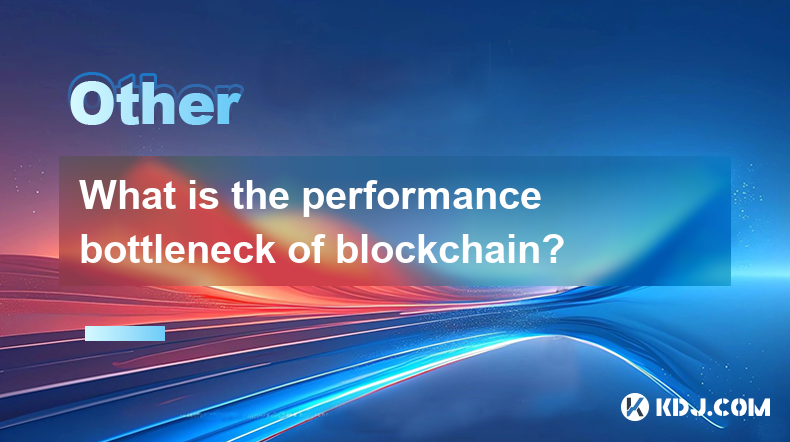
Understanding Blockchain's Performance Limitations
Blockchain technology, while revolutionary, faces inherent performance bottlenecks that limit its scalability and widespread adoption. These limitations stem from the fundamental design principles that ensure security and decentralization. Understanding these bottlenecks is crucial for developing solutions and improving blockchain performance.
One primary bottleneck is transaction throughput. Traditional payment systems can process thousands of transactions per second. However, most blockchains struggle to achieve even a fraction of that speed. This is largely due to the need for consensus mechanisms, which require network-wide verification of each transaction. The slower the consensus, the lower the throughput.
Another key limitation is latency. This refers to the time it takes for a transaction to be confirmed and added to the blockchain. High latency can make real-time applications impractical. Factors contributing to latency include block generation times, network propagation delays, and the complexity of the consensus mechanism. The longer the confirmation time, the less suitable the blockchain for time-sensitive applications.
Exploring Specific Bottlenecks: Consensus Mechanisms
The choice of consensus mechanism significantly impacts blockchain performance. Proof-of-Work (PoW), while secure, is notoriously slow and energy-intensive. Mining requires significant computational power, leading to long block generation times and low throughput. Proof-of-Stake (PoS) offers improvements in energy efficiency and speed, but still faces scalability challenges as the network grows.
Other consensus mechanisms, such as Delegated Proof-of-Stake (DPoS) and Practical Byzantine Fault Tolerance (PBFT), aim to address these issues. However, each mechanism has its own trade-offs between security, decentralization, and performance. The optimal choice depends on the specific application requirements.
The Role of Block Size and Network Bandwidth
The size of each block also affects performance. Larger blocks can accommodate more transactions, increasing throughput. However, larger blocks require more storage space and increase network bandwidth requirements. This can lead to slower propagation times and increased latency, especially for nodes with limited resources.
Network bandwidth is another critical factor. A congested network can significantly slow down transaction processing. As the number of nodes and transactions increases, network bandwidth becomes a major bottleneck. Solutions such as sharding and layer-2 scaling solutions aim to alleviate this issue by partitioning the network and offloading transactions.
Data Storage and Retrieval Limitations
Storing the entire blockchain on each node requires significant storage capacity. This can be a challenge for smaller devices and limits the number of nodes that can participate in the network. Moreover, retrieving data from the blockchain can be slow, especially for large datasets. Efficient indexing and database technologies are crucial for optimizing data access.
The growing size of the blockchain also presents challenges for data synchronization. Keeping all nodes synchronized with the latest blockchain state requires significant bandwidth and processing power. This synchronization process can become a bottleneck as the blockchain grows larger and more transactions are processed.
Scalability Challenges and Solutions
Scalability is a major concern for blockchain technology. As the number of users and transactions increases, the performance of the blockchain can degrade significantly. Various solutions are being explored to address this issue, including:
- Sharding: Partitioning the blockchain into smaller, more manageable shards.
- Layer-2 scaling solutions: Offloading transactions to secondary networks.
- State channels: Creating off-chain channels for faster transaction processing.
- Sidechains: Using separate blockchains to handle specific types of transactions.
- Plasma: A framework for creating child blockchains that are secured by the main chain.
These solutions offer different approaches to improve scalability, each with its own advantages and disadvantages. The optimal solution depends on the specific requirements of the blockchain application.
Smart Contracts and Their Impact on Performance
Smart contracts, self-executing contracts with the terms of the agreement between buyer and seller being directly written into lines of code, add another layer of complexity to blockchain performance. The execution of smart contracts consumes computational resources and can contribute to network congestion. Complex smart contracts can significantly increase transaction processing times and reduce throughput. Optimization techniques for smart contract code are crucial for improving performance.
The Importance of Network Optimization
Network optimization is vital for improving blockchain performance. This includes optimizing network protocols, improving node connectivity, and reducing latency. Efficient routing algorithms and load balancing techniques can significantly improve network throughput and reduce congestion. Furthermore, the use of faster and more reliable network infrastructure can enhance overall blockchain performance.
Frequently Asked Questions
Q: What is the biggest bottleneck in blockchain technology?
A: There isn't one single biggest bottleneck. It depends on the specific blockchain and its application. However, transaction throughput, latency, and scalability are consistently major challenges.
Q: How can blockchain scalability be improved?
A: Several techniques are being explored, including sharding, layer-2 scaling solutions (like Lightning Network), state channels, sidechains, and Plasma. The best approach depends on the specific blockchain and its use case.
Q: Why is Proof-of-Work slow?
A: Proof-of-Work relies on computationally intensive mining to validate transactions. This process is inherently slow and energy-intensive, limiting transaction throughput.
Q: How does block size affect blockchain performance?
A: Larger blocks can increase throughput but also require more storage and bandwidth, potentially leading to slower propagation times and increased latency. Finding the optimal block size is a balancing act.
Q: What role does network bandwidth play?
A: Network bandwidth is crucial. A congested network can significantly slow down transaction processing, impacting both throughput and latency. Improving network infrastructure and employing efficient network protocols are essential.
Disclaimer:info@kdj.com
The information provided is not trading advice. kdj.com does not assume any responsibility for any investments made based on the information provided in this article. Cryptocurrencies are highly volatile and it is highly recommended that you invest with caution after thorough research!
If you believe that the content used on this website infringes your copyright, please contact us immediately (info@kdj.com) and we will delete it promptly.
- FDUSD, BTC, TUSD, SEI, and LINK are the top 5 virtual asset-related keywords attracting the most interest
- 2025-04-03 15:45:12
- Bitcoin Pepe (BPEP) could hit $250 in four years
- 2025-04-03 15:45:12
- TAO Breaks Resistance, HYPE Dips 14%— Yet BlockDAG PullS in $210M Following Keynote 3 Launch!
- 2025-04-03 15:40:13
- Dogecoin (DOGE) Price Prediction: An Analyst Highlights a Bullish Divergence, Suggesting a Rally Could Be in the Cards
- 2025-04-03 15:40:13
- XRP Navigates Volatile Waters, Targeting a Breakout From Its Range
- 2025-04-03 15:35:27
- Meme Cryptocurrency Dogecoin DOGE/USD Falls After President Donald Trump's Tariff Shock, Extending Weekly Losses to Over 16%
- 2025-04-03 15:35:27
Related knowledge
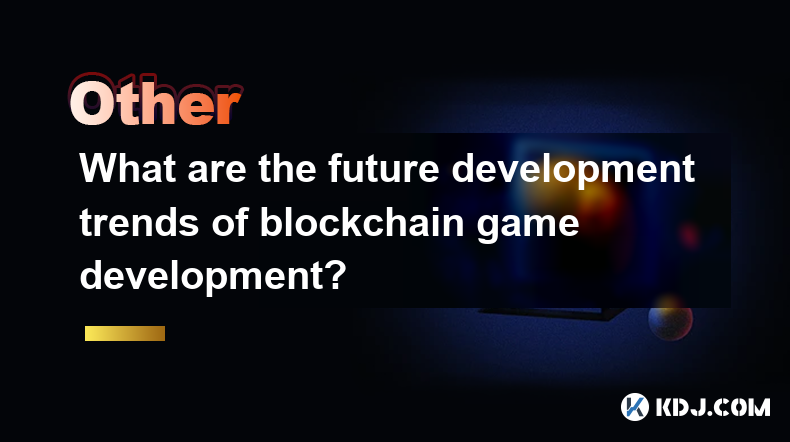
What are the future development trends of blockchain game development?
Apr 03,2025 at 05:00am
Blockchain technology has revolutionized various industries, and gaming is no exception. As we look to the future, several trends are set to shape the development of blockchain games. These trends not only promise to enhance the gaming experience but also to integrate blockchain technology more seamlessly into the gaming ecosystem. Let's explore these t...
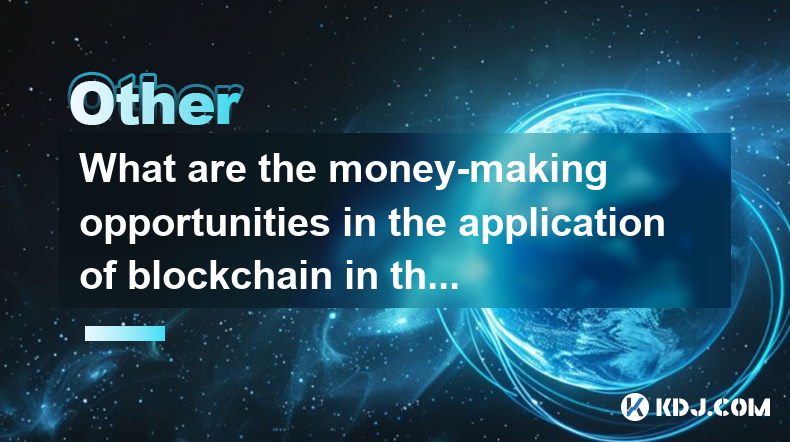
What are the money-making opportunities in the application of blockchain in the medical industry?
Apr 03,2025 at 03:35am
The integration of blockchain technology into the medical industry presents a myriad of money-making opportunities that can revolutionize healthcare systems. Blockchain's inherent characteristics, such as transparency, security, and immutability, make it an ideal solution for various medical applications. By leveraging blockchain, companies can develop ...
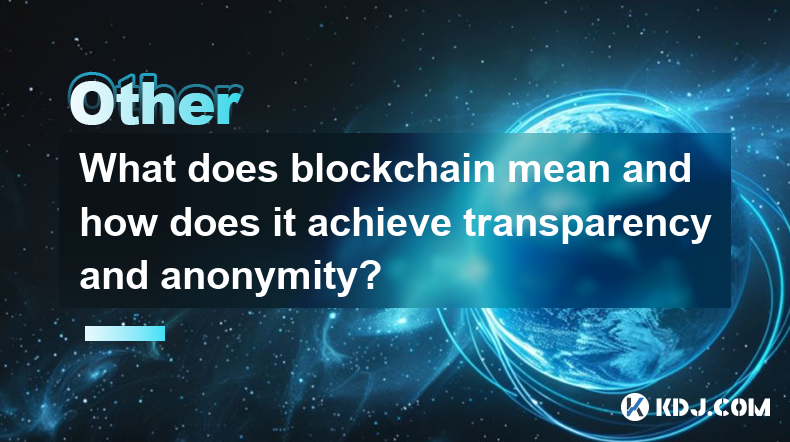
What does blockchain mean and how does it achieve transparency and anonymity?
Apr 03,2025 at 11:28am
Blockchain technology is a decentralized, distributed ledger that records transactions across numerous computers. It ensures that once data is recorded, it cannot be altered retroactively without the alteration of all subsequent blocks and the consensus of the network. This technology underpins cryptocurrencies like Bitcoin and Ethereum, providing a sec...
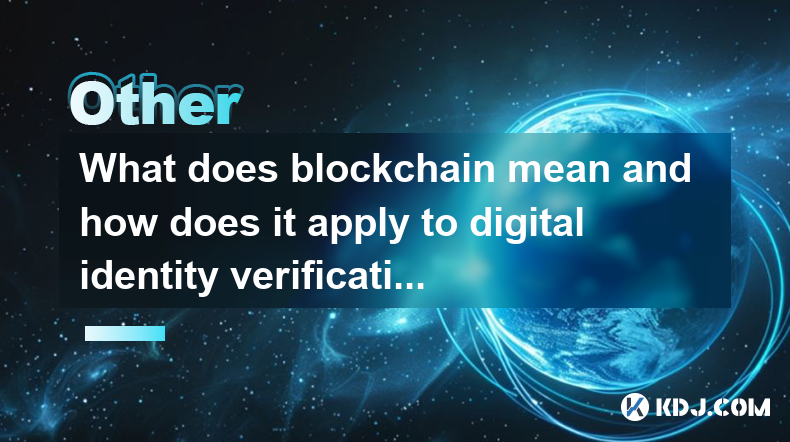
What does blockchain mean and how does it apply to digital identity verification?
Apr 03,2025 at 02:21am
Blockchain technology, at its core, is a decentralized and distributed digital ledger used to record transactions across numerous computers. This ensures that the recorded data cannot be altered retroactively without the alteration of all subsequent blocks and the consensus of the network. The concept of blockchain was initially devised for the digital ...
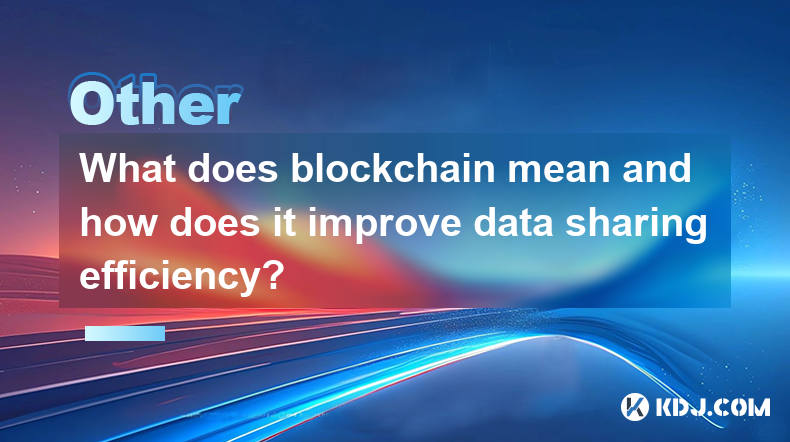
What does blockchain mean and how does it improve data sharing efficiency?
Apr 03,2025 at 03:15pm
Blockchain is a decentralized and distributed digital ledger technology that records transactions across numerous computers. This technology ensures that once data is recorded, it cannot be altered retroactively without the alteration of all subsequent blocks and the consensus of the network. This characteristic makes blockchain highly secure and transp...
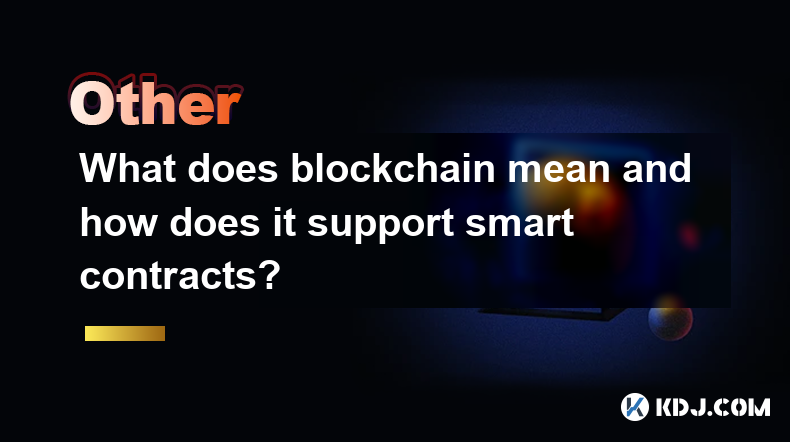
What does blockchain mean and how does it support smart contracts?
Apr 03,2025 at 02:28am
Blockchain technology is a decentralized, distributed ledger that records transactions across numerous computers. It ensures that once data is recorded, it cannot be altered retroactively without the alteration of all subsequent blocks and the consensus of the network. This technology is the backbone of cryptocurrencies like Bitcoin and Ethereum. Blockc...

What are the future development trends of blockchain game development?
Apr 03,2025 at 05:00am
Blockchain technology has revolutionized various industries, and gaming is no exception. As we look to the future, several trends are set to shape the development of blockchain games. These trends not only promise to enhance the gaming experience but also to integrate blockchain technology more seamlessly into the gaming ecosystem. Let's explore these t...

What are the money-making opportunities in the application of blockchain in the medical industry?
Apr 03,2025 at 03:35am
The integration of blockchain technology into the medical industry presents a myriad of money-making opportunities that can revolutionize healthcare systems. Blockchain's inherent characteristics, such as transparency, security, and immutability, make it an ideal solution for various medical applications. By leveraging blockchain, companies can develop ...

What does blockchain mean and how does it achieve transparency and anonymity?
Apr 03,2025 at 11:28am
Blockchain technology is a decentralized, distributed ledger that records transactions across numerous computers. It ensures that once data is recorded, it cannot be altered retroactively without the alteration of all subsequent blocks and the consensus of the network. This technology underpins cryptocurrencies like Bitcoin and Ethereum, providing a sec...

What does blockchain mean and how does it apply to digital identity verification?
Apr 03,2025 at 02:21am
Blockchain technology, at its core, is a decentralized and distributed digital ledger used to record transactions across numerous computers. This ensures that the recorded data cannot be altered retroactively without the alteration of all subsequent blocks and the consensus of the network. The concept of blockchain was initially devised for the digital ...

What does blockchain mean and how does it improve data sharing efficiency?
Apr 03,2025 at 03:15pm
Blockchain is a decentralized and distributed digital ledger technology that records transactions across numerous computers. This technology ensures that once data is recorded, it cannot be altered retroactively without the alteration of all subsequent blocks and the consensus of the network. This characteristic makes blockchain highly secure and transp...

What does blockchain mean and how does it support smart contracts?
Apr 03,2025 at 02:28am
Blockchain technology is a decentralized, distributed ledger that records transactions across numerous computers. It ensures that once data is recorded, it cannot be altered retroactively without the alteration of all subsequent blocks and the consensus of the network. This technology is the backbone of cryptocurrencies like Bitcoin and Ethereum. Blockc...
See all articles























































































